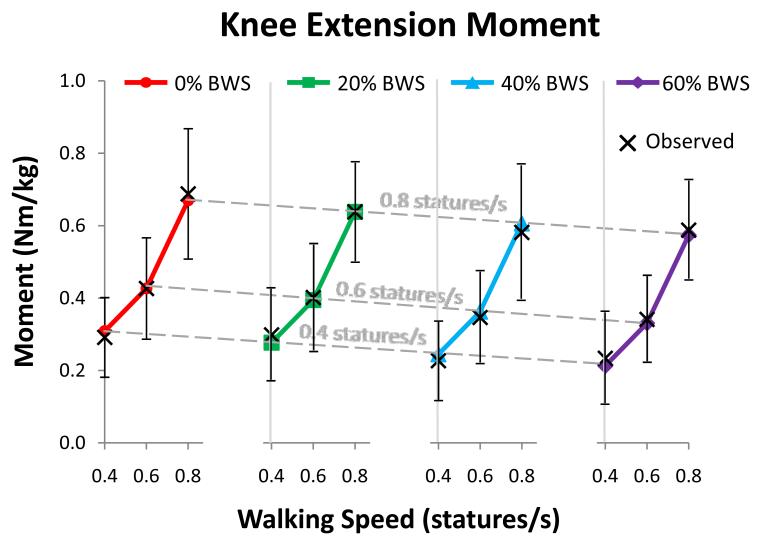Figure 4.
Predicted and observed average peak knee extension moment as it changes with walking speed (varied from 0.4 to 0.8 statures/s) and BWS level (varied from 0% to 60% bodyweight). The values predicted by the regression models (Table 1) are shown by the filled shapes and the observed values are shown by “X”s, with error bars on the observed values indicating ± 1 standard deviation. In general, mean peak knee extension moments increased in a non-linear manner with increasing walking speed (quadratic relationship), as the slope between 0.4 and 0.6 statures/s was less than the slope between 0.6 and 0.8 statures/s. Walking speed sensitivity was not calculated due to the non-linearity of the predicted values. There was no significant change in knee extension moment with BWS level. BWS sensitivity at each walking speed was calculated as the slope of each dashed line (due to the even spacing between the four BWS plots). There was no significant interaction effect between walking speed and BWS.

